Time: 11:00AM – 3:30PM
Location: Buena Vista Area
Arkansas River 05/02/2025 Photo Album
As I contemplated options for a day of fly fishing on Friday, May 2, I could not erase thoughts of the Arkansas River caddis hatch from my memory. My young friend, Ben, and I visited lower Bighorn Sheep Canyon on 04/25/2025, and although we had decent success, we did not witness the massive caddis event that we were seeking. We saw two caddis during our entire day on the river. Were we above or below the main emergence, or was the caddis hatch perhaps a non-event in 2025?
The cool weather early in the week confined me to short trips to the Front Range, so I was open to a longer drive on Friday. The forecast for Friday was only moderately more favorable with highs in the mid-sixties for Denver. I searched around for possibilities, and I identified the Arkansas River with highs in Salida in the low sixty degree range.
Next I researched the DWR site for flows, and the Nathrop gauge registered 360 CFS. That was encouraging. Finally I visited the fly shop web sites, and the local experts suggested that the main body of the hatch was between Big Bend and Rincon in the Salida area. I like the river structure in the Buena Vista area, and the fly shop reported clear conditions, so I decided to make the drive. Buena Vista is a bit closer than the Salida stretch, and I speculated that perhaps the caddis would advance to Buena Vista, and I would miraculously hit the leading edge of the hatch. One can always hope.
I departed on Friday in a westward direction and made the drive on US 285 to the Buena Vista area. When I arrived at my chosen pullout, the air temperature was 53 degrees, and the wind was a very significant factor, and it would remain one throughout my day. Unfortunately it was a headwind, and this played havoc with my upstream casts resulting in significant neck and shoulder fatigue by the end of the day.
I wore my Brooks long sleeve undershirt and added my fleece hoodie and rain shell. For head gear I wore my billed hat with earflaps, and the choice suited me well, when the wind blasted in my face. I strung my Sage R8 four weight, and I ambled downriver for .25 mile. Along the way I saw a large tent, and this caused me concern that I would be sharing my section of the river with another fisherman or group of fishermen.
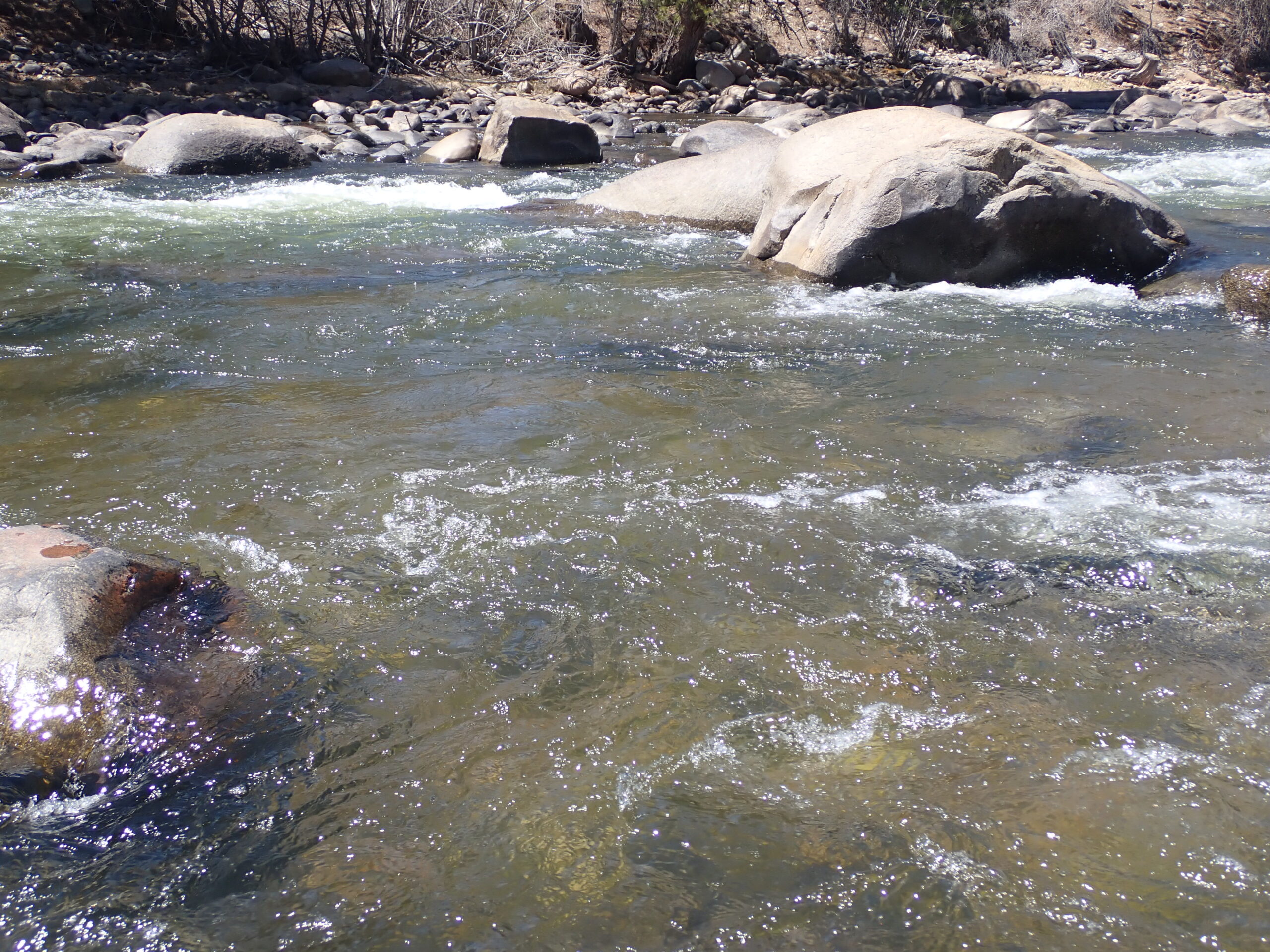 Slow Current and Depth Were Key
Slow Current and Depth Were Key
When I arrived at the edge of the river, I tied a size 8 yellow fat Albert with missing legs to my line. I was using the fat Albert as a strike indicator, so I was not concerned about the missing appendages. Beneath the foam hopper I knotted my 2025 favorite, the olive perdigon, and below that fly I added a bright green sparkle caddis pupa. In the first deep run where I cast, I momentarily hooked up with two fish, but then I persisted and nailed a pair of brown trout, before I found a nice lunch spot. One of the morning browns nabbed the caddis pupa, and the other snatched the perdigon.
After lunch I continued up the river, until I was just beyond my parking space by 3:30PM, and I boosted the fish count from two to eighteen. By 12:45 I concluded that the caddis pupa was not effective, so I exchanged it for a size 22 sparkle wing RS2, and the fat Albert, olive perdigaon and sparkle wing RS2 remained in place as my offerings for the rest of my time on the river.
Of the eighteen fish landed, one crushed the fat Albert, one grabbed the bright green caddis pupa, and four chased and nipped the sparkle wing. All the remaining trout favored the perdigon, and it was a testament to how effective the simple tungsten bead fly has become to my spring time success. All but one of the trout were browns. The average size of the trout in this section of the river was smaller than that which I experience downstream; however, I did land a couple thirteen inch browns. Most of the other browns and the single rainbow were in the ten to twelve inch range.
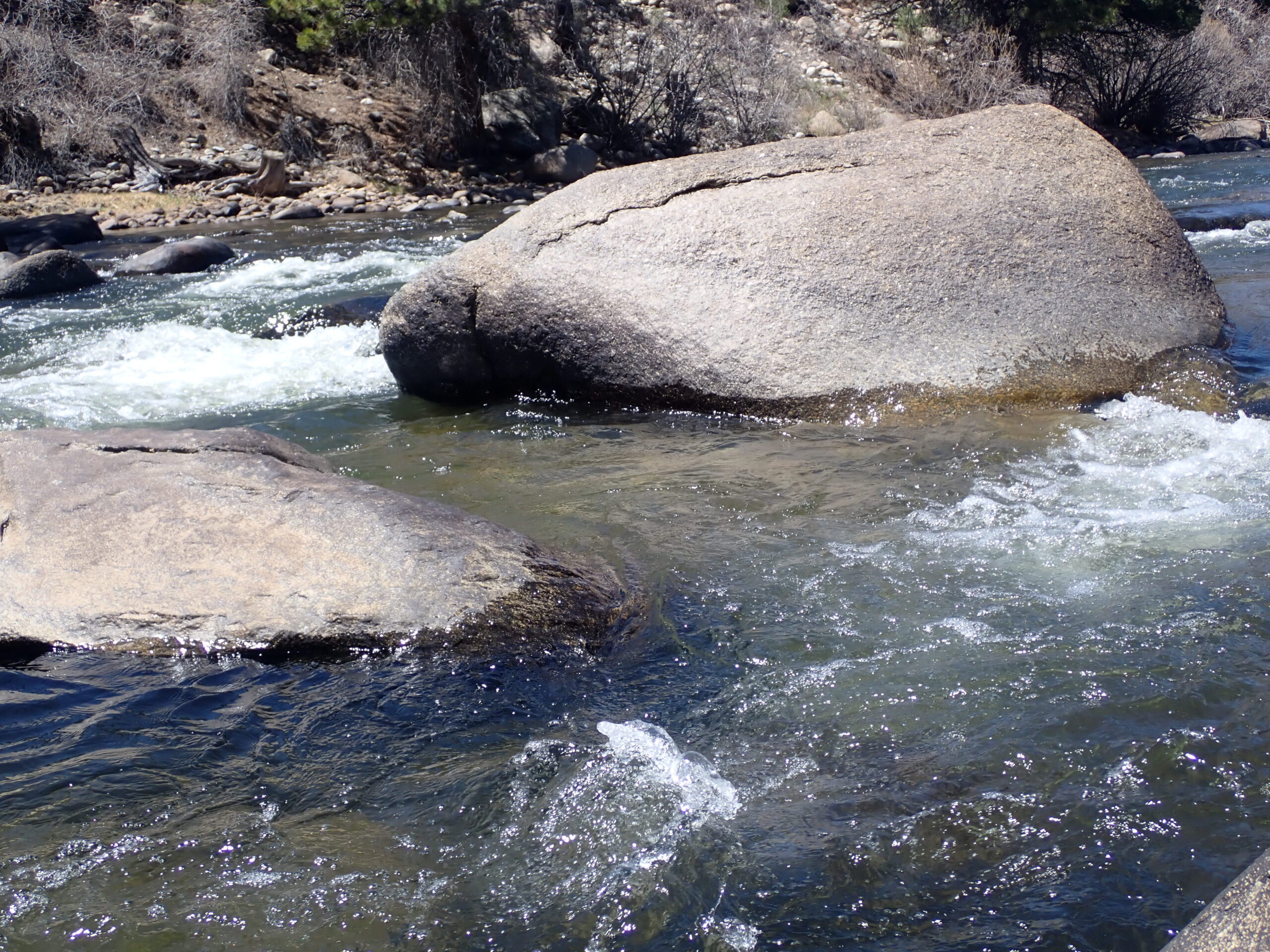 Surprised by One from the Narrow Space Between Exposed Rocks
Surprised by One from the Narrow Space Between Exposed Rocks
What sort of river structure produced trout? By far the best places were deep slots and troughs where currents merged or cushions in front of rocks at the tail of pockets or riffles. I wasted a lot of time fishing marginal spots along the bank, but the fish seemed to place a premium on water depth. I saw only a handful of caddis, so I concluded that the main hatch had not yet reached the Buena Vista area. I did spot a few blue wing olives, but the hatch, if there was one, was very sparse and failed to initiate any surface feeding.
I encountered one other angler, and I mounted the steep bank and circled around him. When I approached the tent that I noticed on my inbound trek, I realized that the inhabitant was a gold prospector. We exchanged nods, and he did not seem to care about my presence near his campsite.
Friday was a fun day, and I was pleased with my destination choice. Did I encounter the famed caddis hatch? No, I did not. Did I experience hot surface action to blue wing olive mayflies? No, that circumstance did not develop as well. In spite of this, I methodically worked my way along the right bank of the river and probed likely spots with my dry/dropper and netted eighteen wild fish. That, in my book, is an enjoyable day, and I beat the onset of snow melt.
Fish Landed: 18

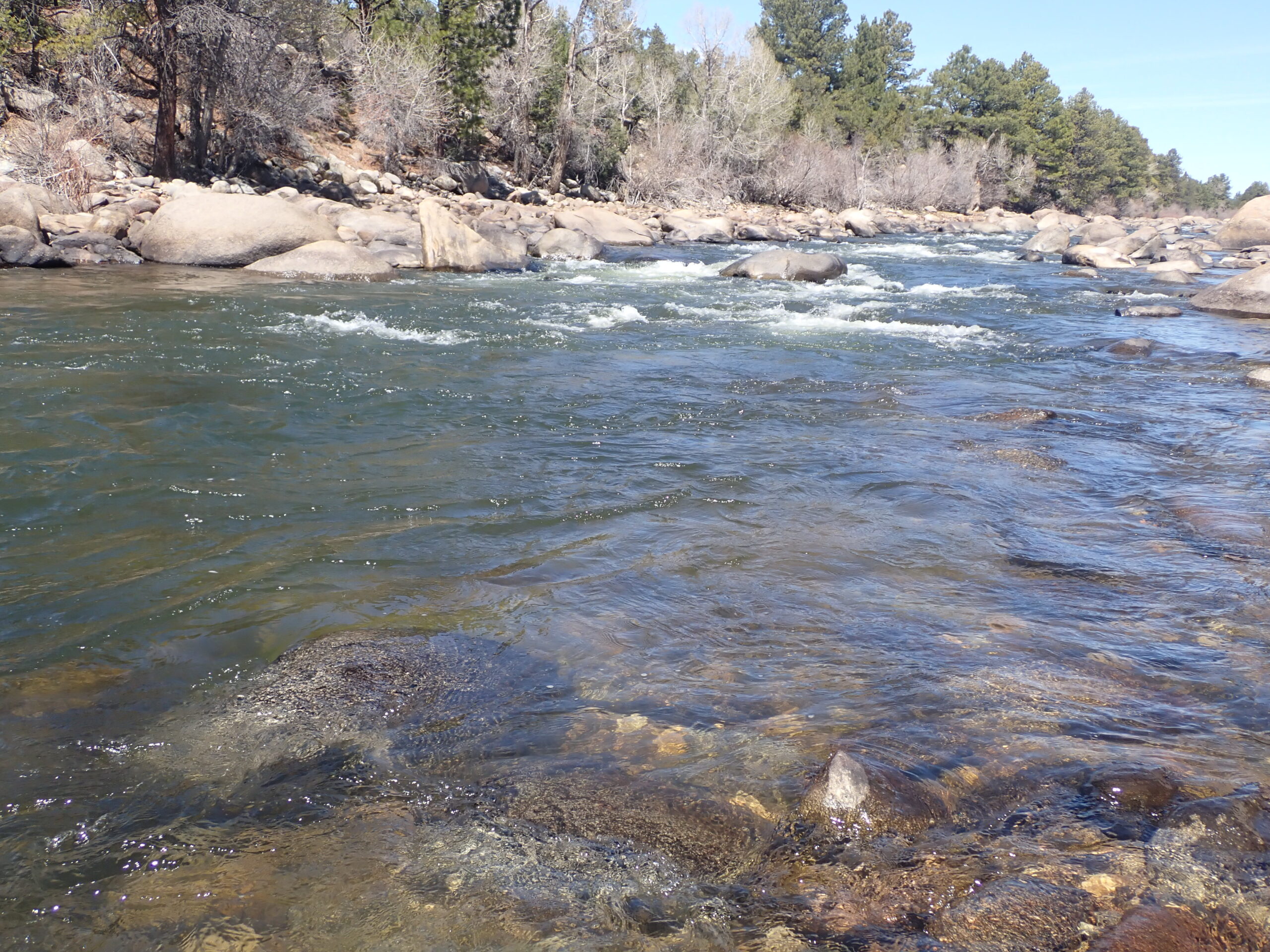 Clear Conditions
Clear Conditions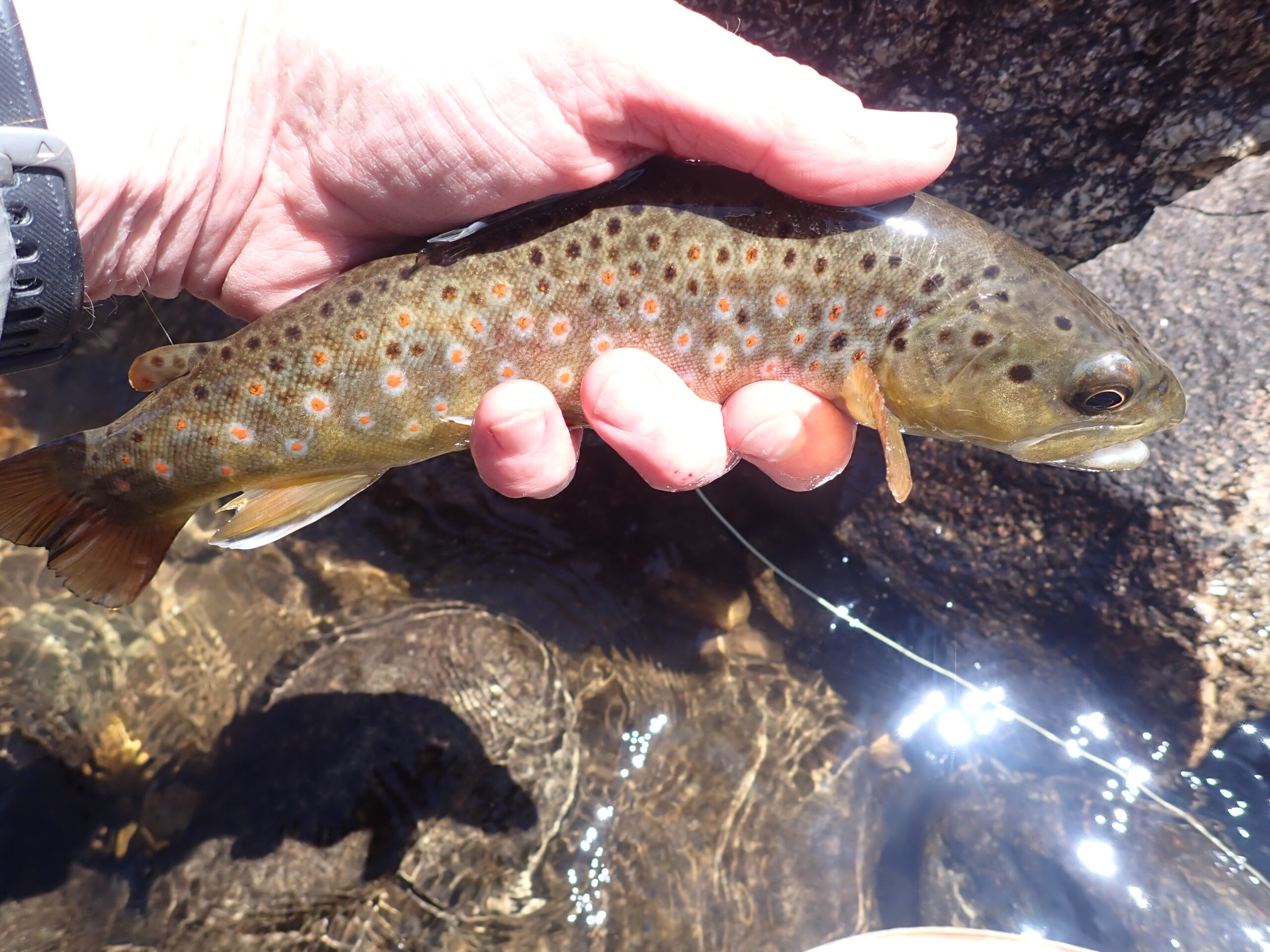 Not a Bad Start
Not a Bad Start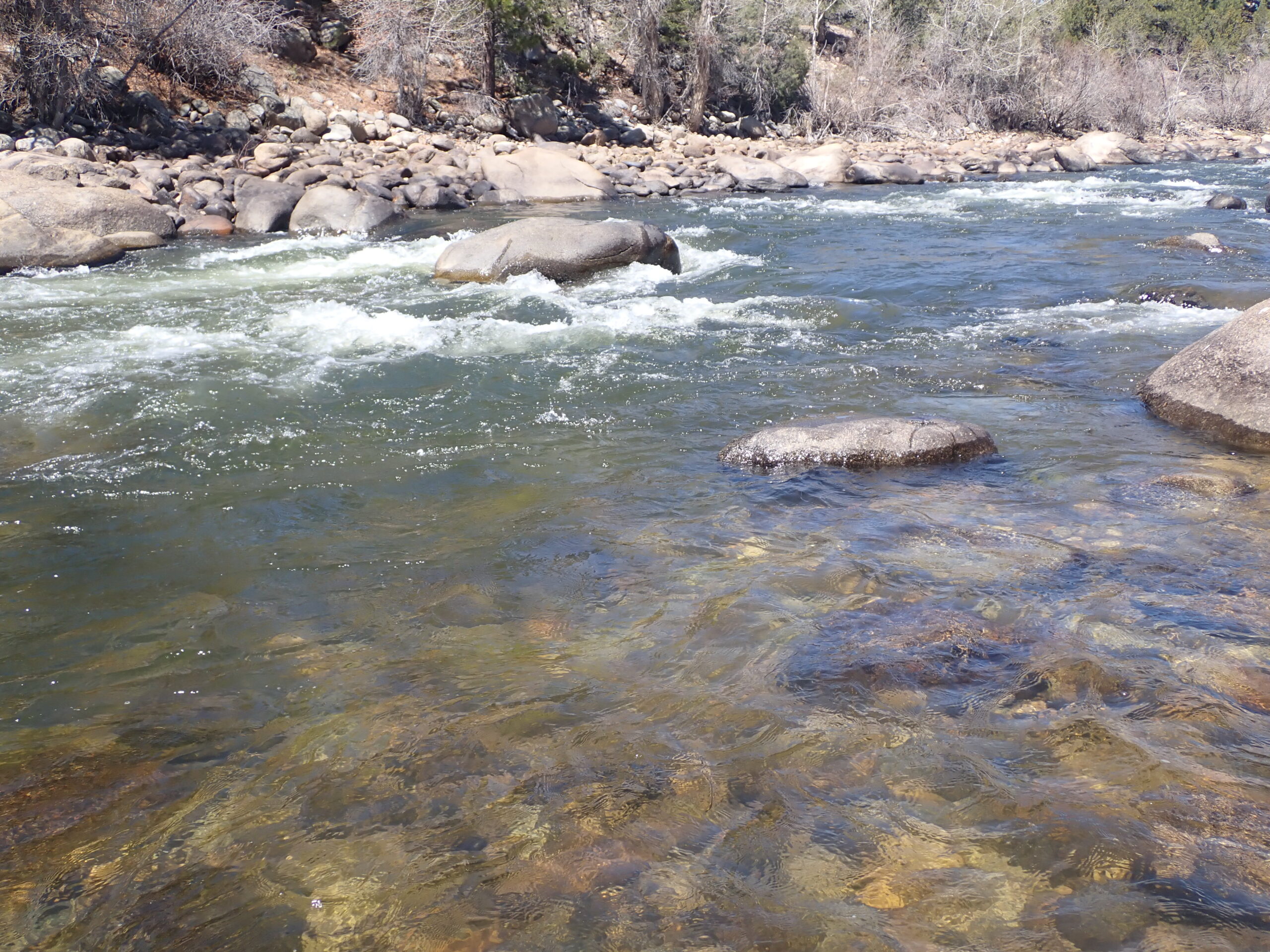 Salivating
Salivating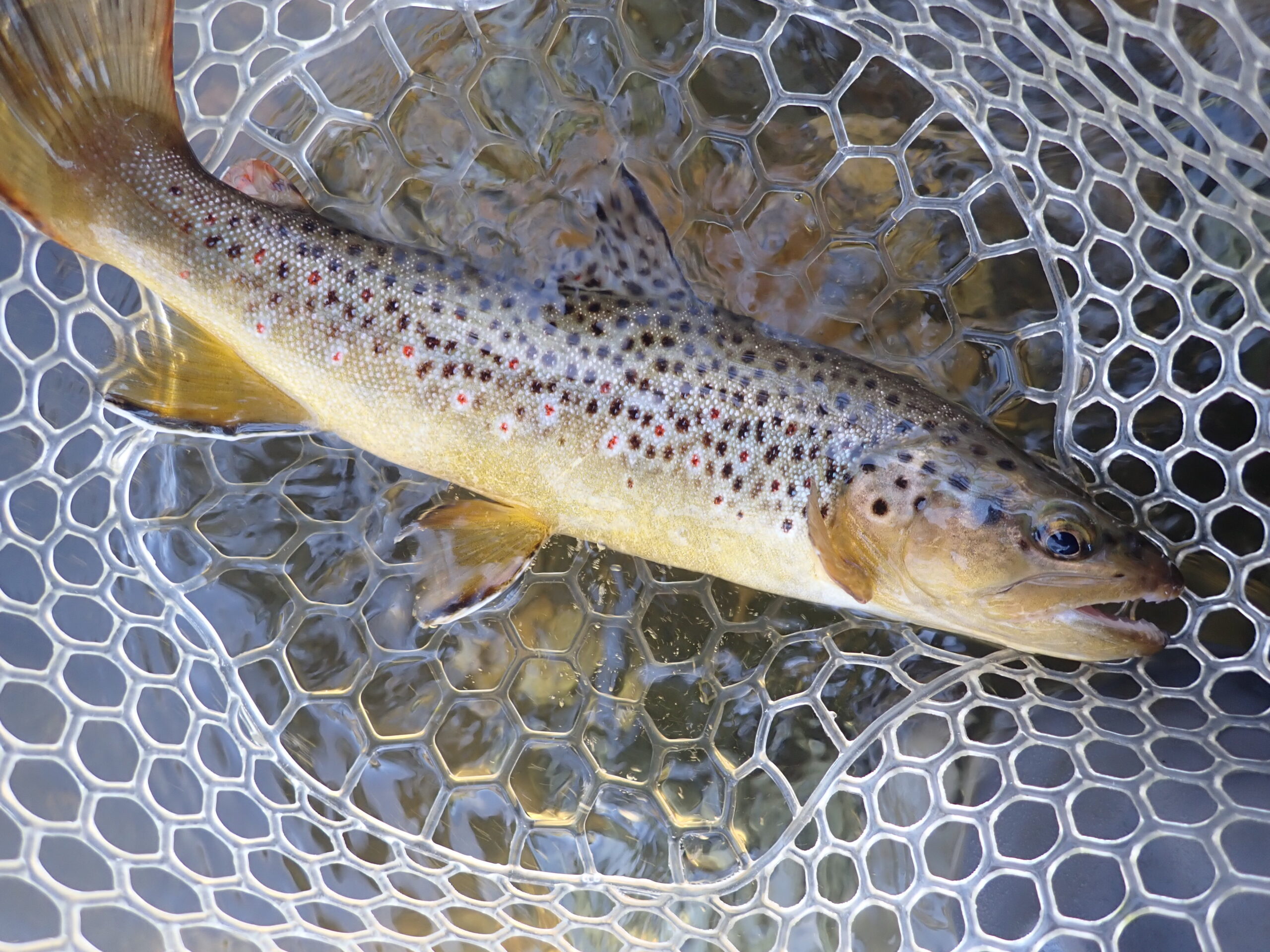 Very Respectable
Very Respectable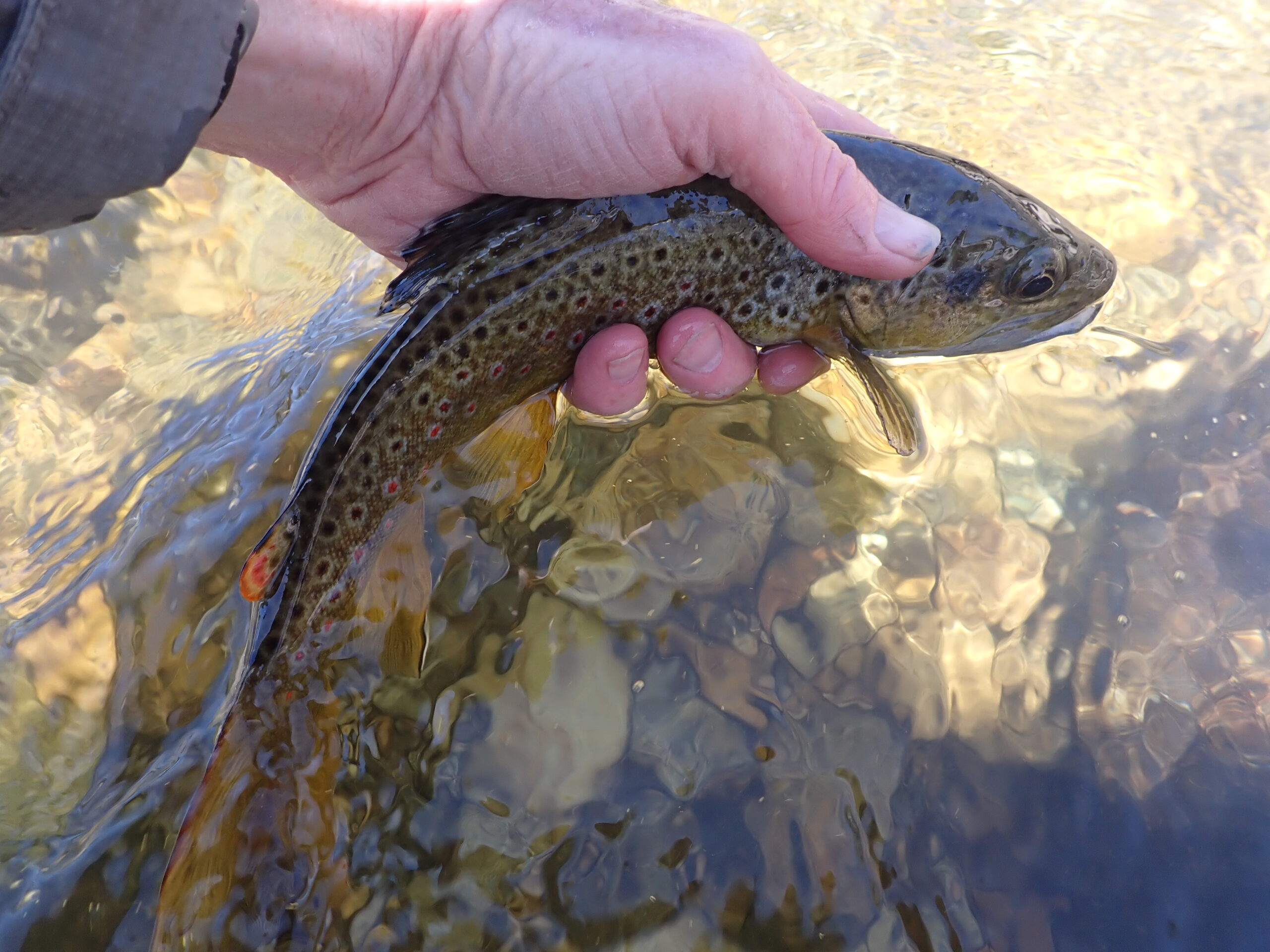 Above the Water
Above the Water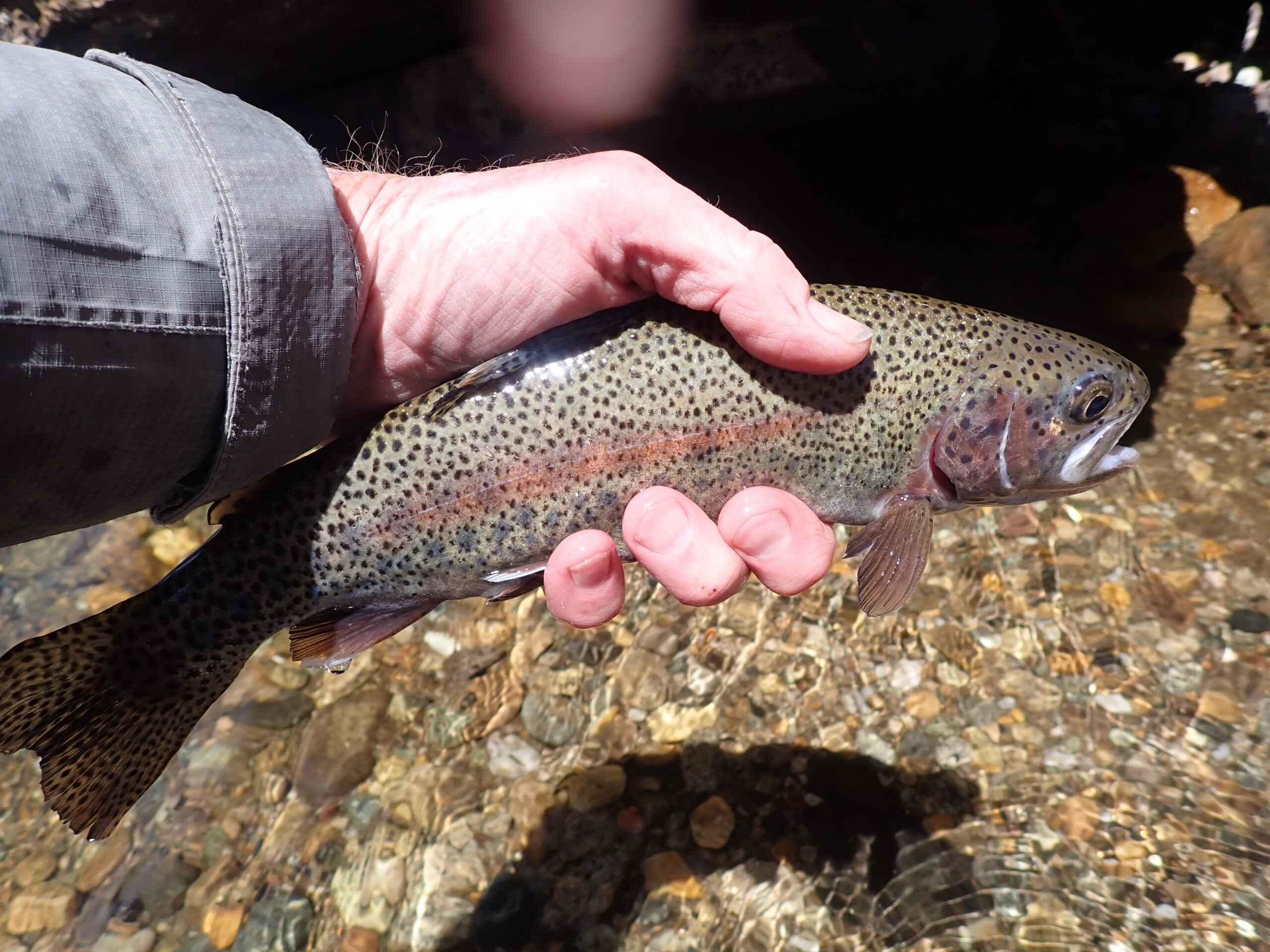 On Display
On Display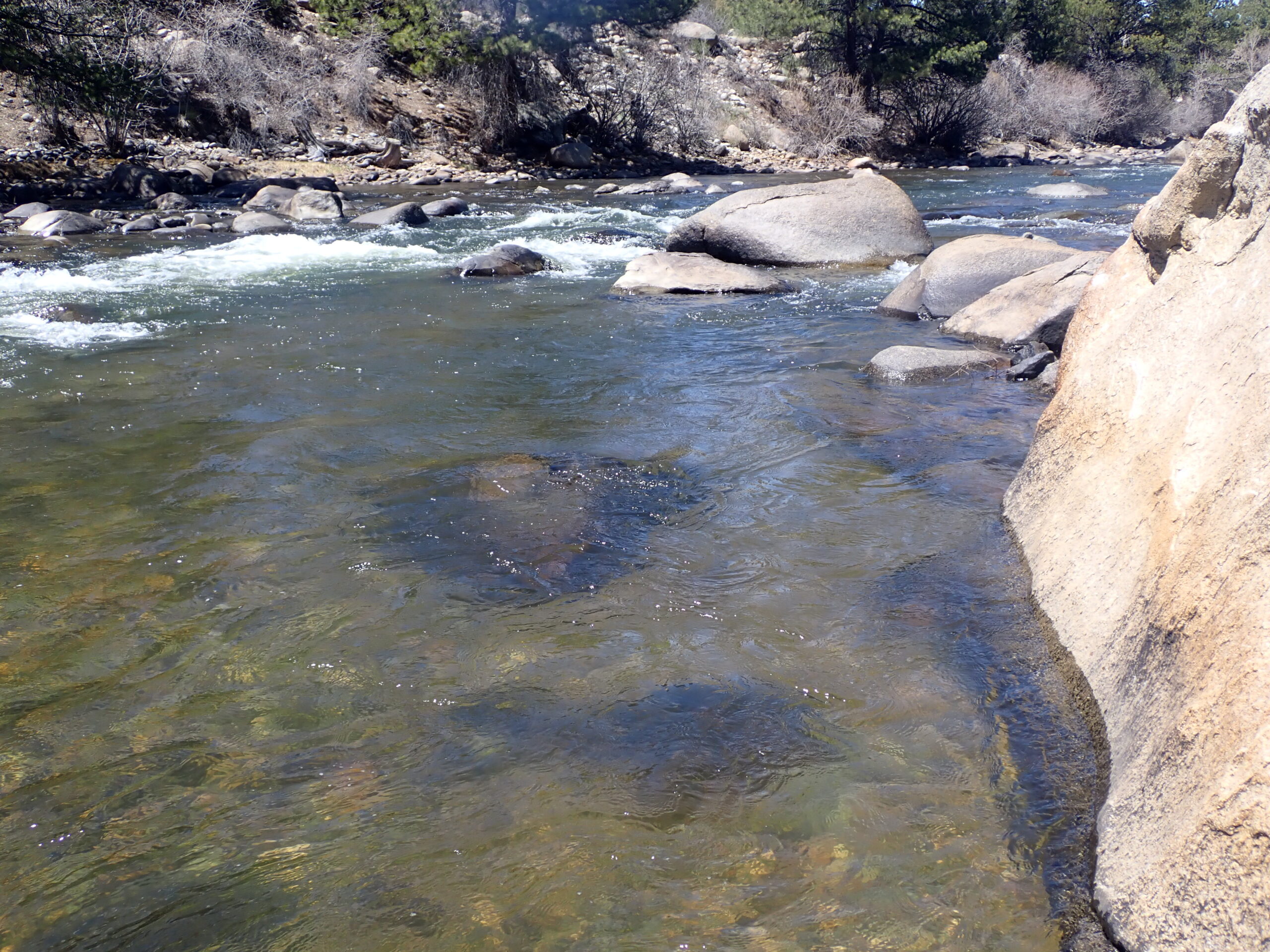 Portends Success
Portends Success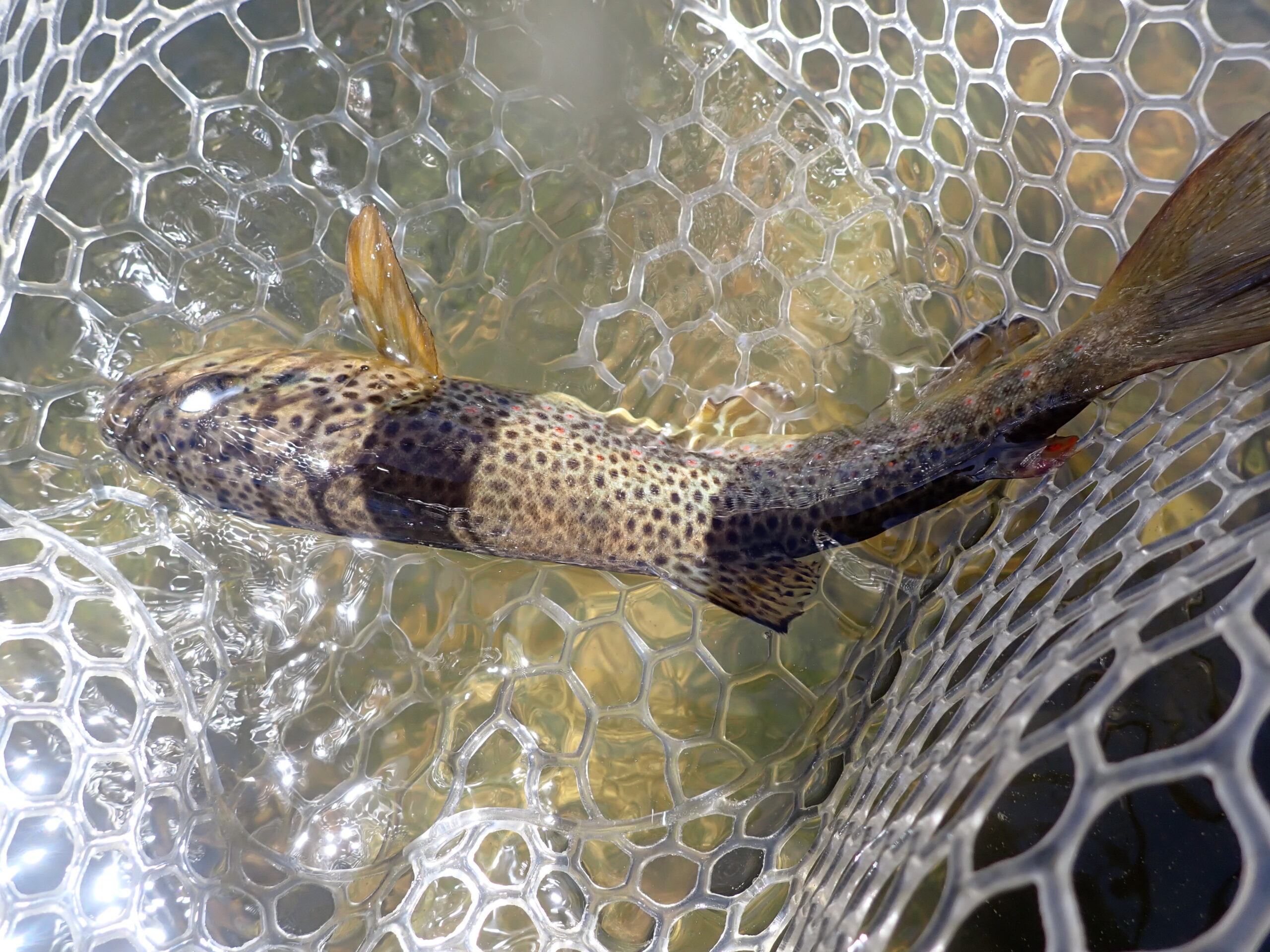 Nice One
Nice One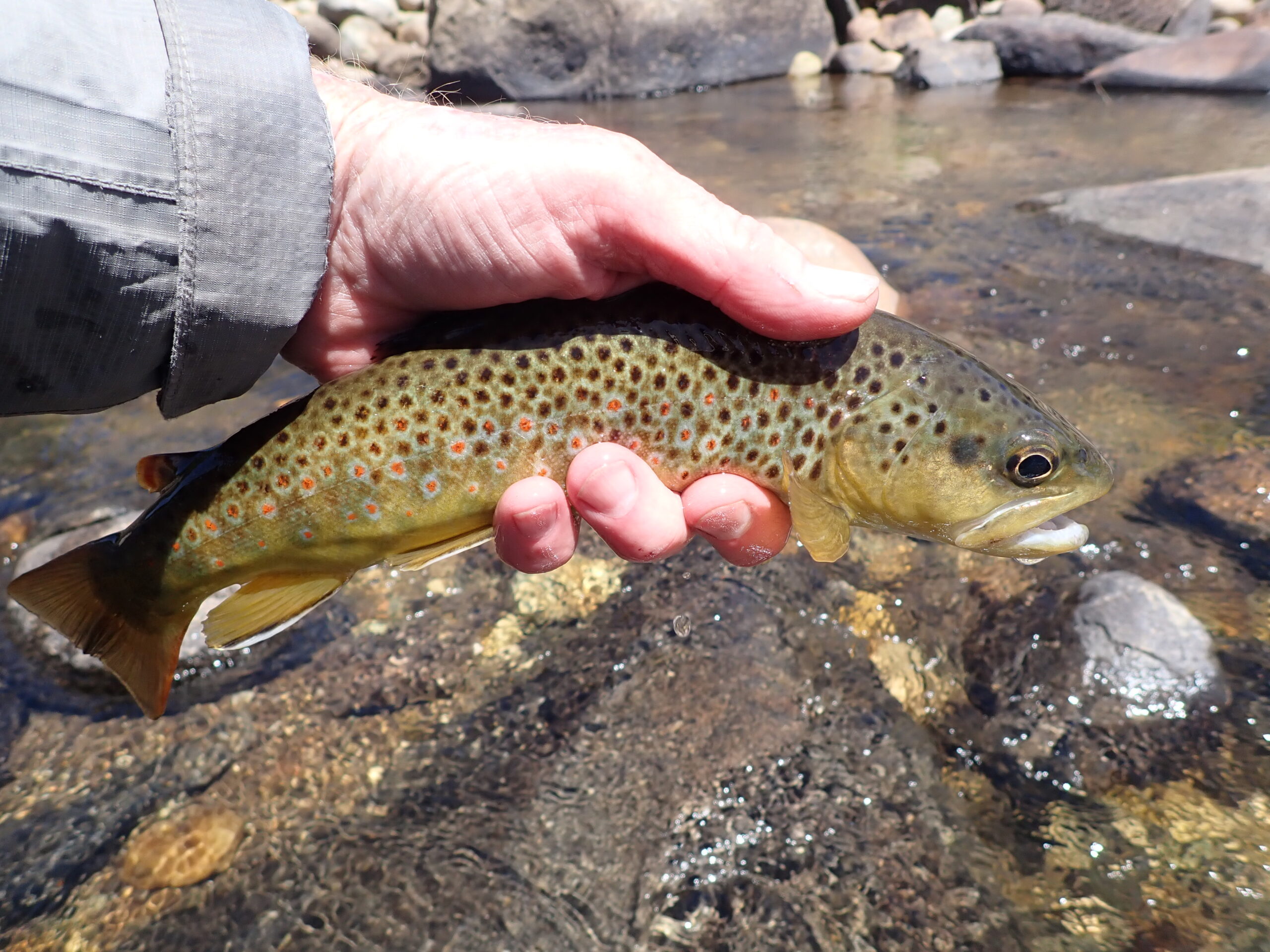 Spots and Colors Superb
Spots and Colors Superb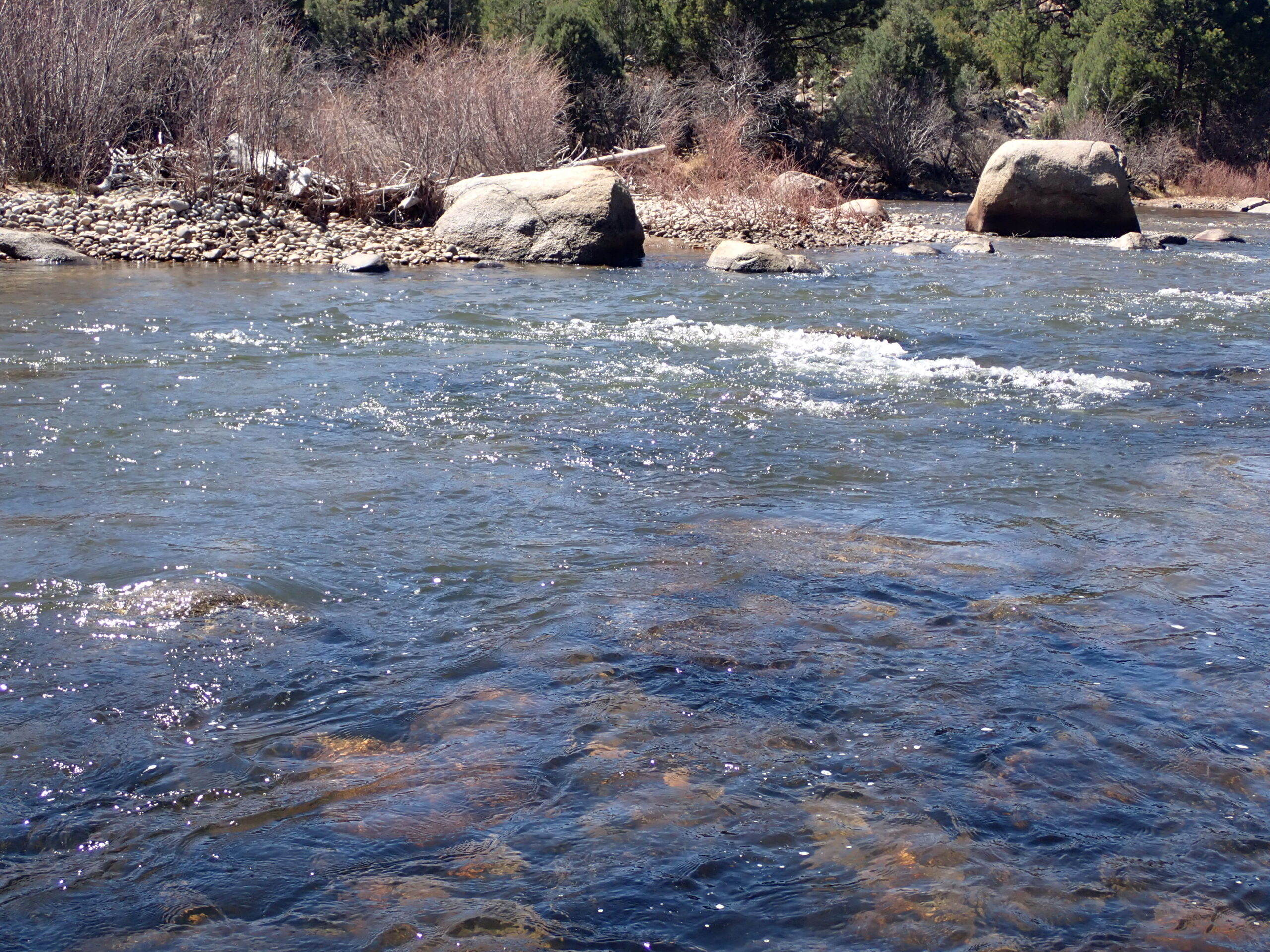 Riffle Section
Riffle Section